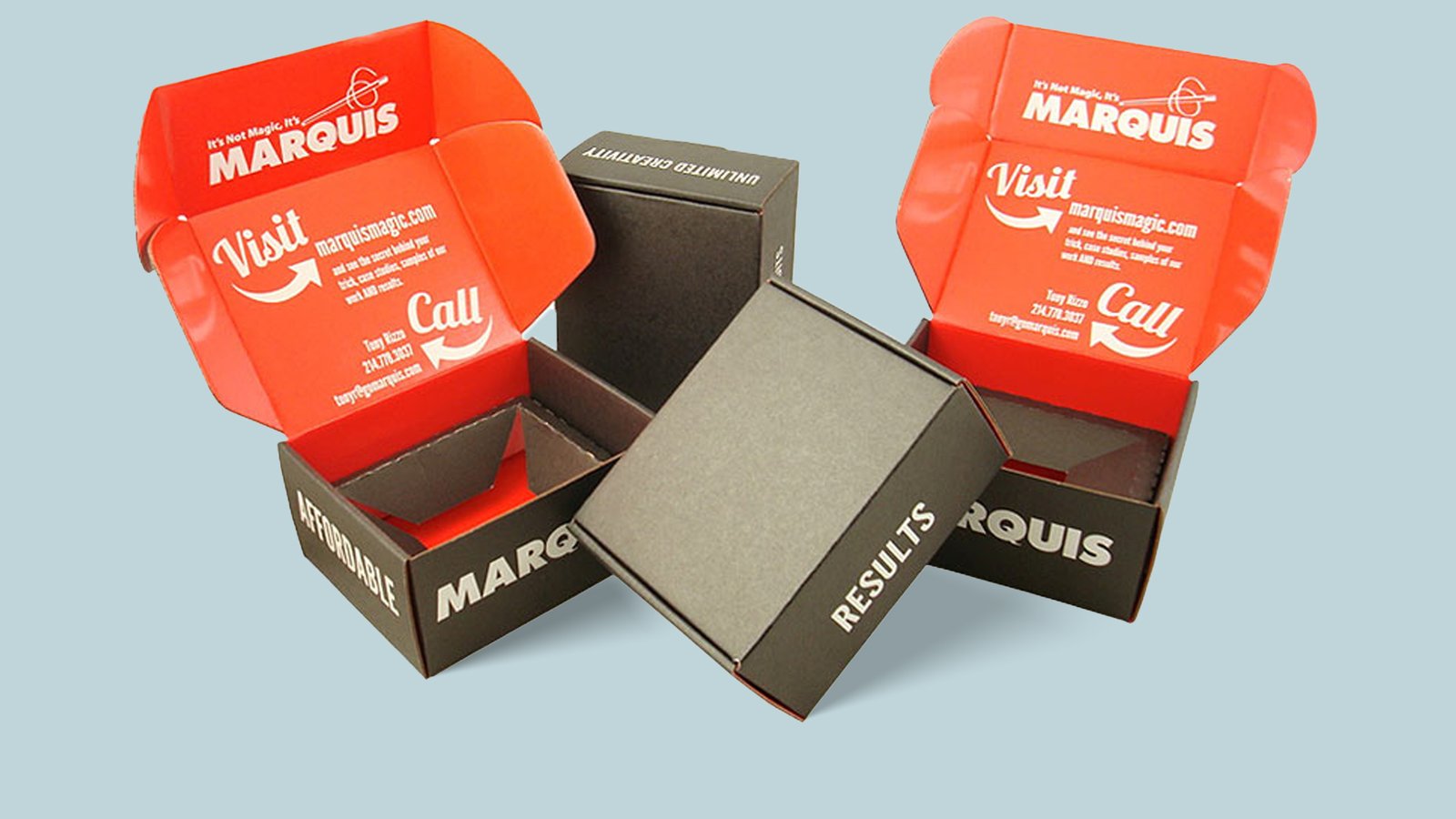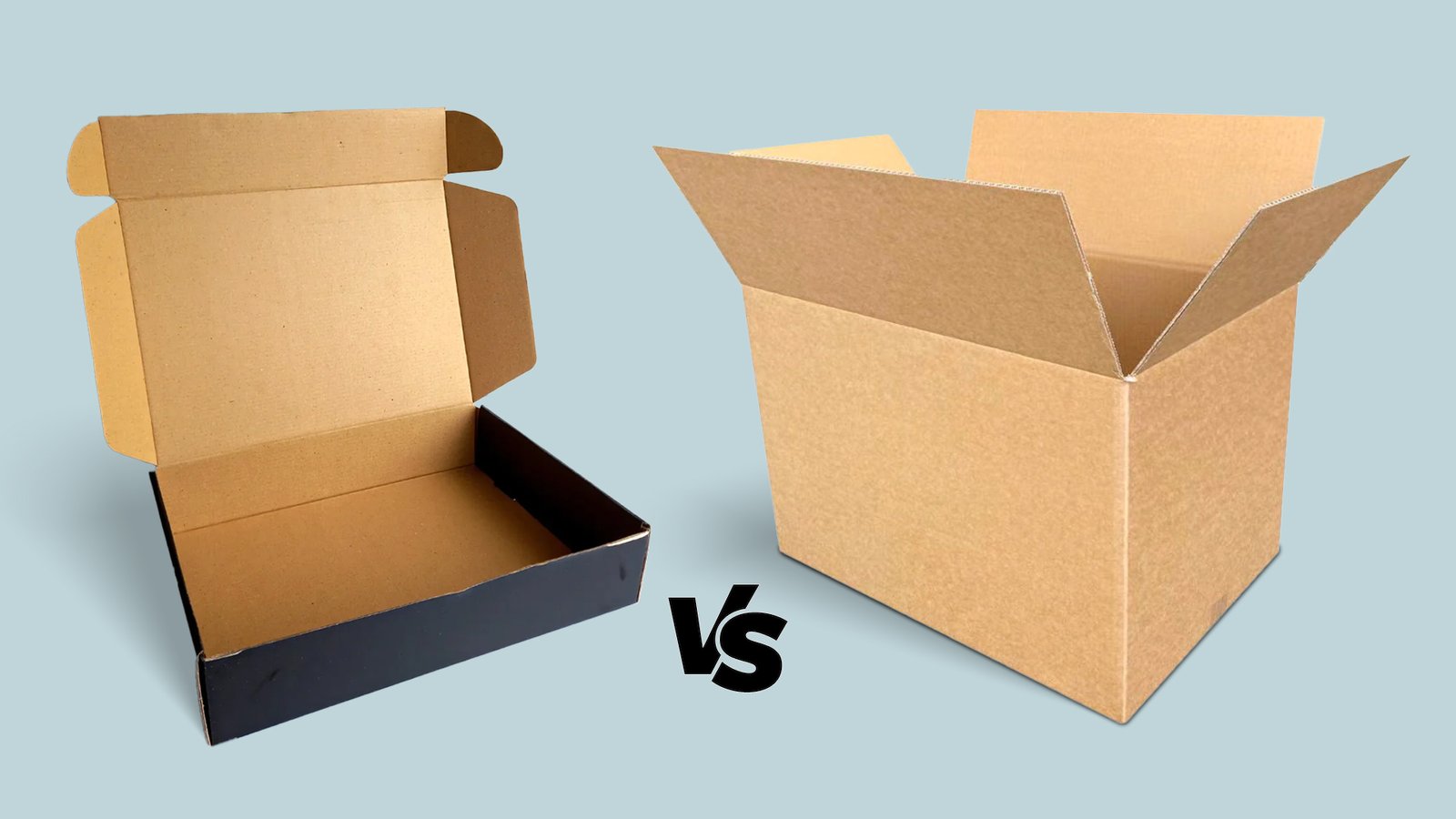Custom Cardboard Boxes - The Best
Way To Protect Your Products During
Shipping

Cardboard is a widely and easily available material and it is also cost-effective for manufacturers. It is a strong and durable material that can be recycled easily and customized easily. Furthermore, cardboard die-cutting, folding, and assembling are much easier as compared to other materials. It is known for its strength, and its ability to bear pressure, and weight. For this reason, it is safe, protected, and secure against vibrations, jerks, and the environment. Next to this, it is available in different thicknesses, is lightweight, good for heavy-duty shipping.
Additionally, its light weight helps in controlling shipping costs, its customization is easy and can be personalized easily. On the other hand, its printing, add-on options, and finishing options make it ideal for product packaging. Its printability, eco-friendly nature, and its retention even at high temperatures make it durable and best for shipping products.
In this article, we will study, how custom cardboard boxes are the best way to protect products during shipping. We will cover all the shipping aspects that are associated with customization and cardboard. Actually, cardboard packaging is not only a carton, it is a tool of marketing, safe for shipping and protection during transportation.
Strength and Durability through cardboard boxes:
As above-mentioned, cardboard is durable and long-lasting. It can be torn into pieces easily and reduce waste on earth. It can bear heavy weight, bear pressure and retain its original position even at high temperatures. So, in this way during transportation, it retains the safety of inside products. Most of the time, a product is inside the box, and during its journey, travels and ships from place to place. Whether we are shipping or warehousing them, cardboard is the best safeguard for them.
Customization and personalization options:
When we are talking about cardboard material, die-cutting into unique shapes is easy. One can create unique shapes and unique openings of cardboard material by using die cutting. Some shapes are more protective,
- 1-2-3 auto bottom
- Straight tuck end
- Reverse tuck end
- Auto bottom closures
These are very common protective shapes for products made up of cardboard. Additionally, these are not limited to this, there are countless shapes for cardboard to be set in. Custom cardboard boxes and interlocking techniques make them strong, standing, and rigid boxes These interlocks combine and carry heavy weight and protect the products during the shipping of products.
Laminations of cardboard material protect them:
Most of the lamination that is made specifically for cardboard, made this material more protective. Such laminations work as a layer that protects the box as well as products from the environment, contamination, and other external factors. Moreover, moisture-resistant laminations, as the name shows protect the environment from light and heat. In addition to this there are a few other important laminations that help the product be protected during shipping;
- Gloss finishing is a barrier to moisture, and humidity, and prevents water. This protects the cardboard and increases its shelf life.
- Oil and Grease-resistant laminations on cardboard protect them from absorbing oils. Next to this, such lamination is being used in automobile industries, and protecting the cardboard from grease, oil, and similar fluids.
- Scratch protection laminations are mainly used for scratch protection. Sometimes, custom cardboard display boxes show scratches during transportation. In order to prevent such scratches, this lamination plays an important role and reduces the scratches even after rubbing boxes.
- UV protection and lamination on cardboard are the next important protection from light, heat waves, and sunlight. Some products' packaging spoiled with sunlight and damaged inside products. For example, for the cosmetic industry, medicine industry, and sensitive products that can spoil with sunlight, we use UV coating and reflect sunlight’s rays. In addition to this, we use UV coating for sensitive products, retain the temperature inside the box, and reflect sunlight.
- Laminations also add rigidity to the box, a few extra layers append rigidity and make the box stronger. In this way, sometimes manufacturers append low-cost laminations and make custom cardboard boxes stronger and more protective during transportation.
The role of laminations is not limited to the aesthetic sense of the box, it extends to the protection, safety of the product, and security of inside goods.
Cardboard inserts and dividers:
Cardboard inserts and dividers we use inside the box and they work best during transportation. The main purpose of inserts and dividers is to protect products that are displayed inside the box. When we are adding groups and collections of products like egg trays we use dividers. They make products fixed among inserts and prevent them from collisions. In this way, even during long transportation products remain safe and secure. There are many sorts of dividers and inserts that packaging engineers use inside cardboard material. Here is the list of dividers and inserts that are useful for product protection;
- Grid dividers are used for the separation of individual products, and we use them in large-size boxes. We can organize multiple products and items neatly inside the box.
- Partition dividers are the second type and these are similar to grid partitions. Such partitions provide separate sections and are used in taller wall custom cardboard boxes. Such partitions reduce the touching of inside products.
- Foam dividers, as the name shows soft materials made of cushion-type partitions. Such partitions hold fragile and costly glass-made items. It prevents individual product movement inside the box.
- Plastic dividers are used for rigid materials for products made up of plastic. These are protected and good for product protection.
- Paperboard dividers inside cardboard material-made boxes are lightweight in nature. These are made up of papers, and help in product organization, handling, and sorting.
- Next to this, EVA foam, tray inserts, die-cut inserts, bubble wraps, slotted inserts, and elastic band inserts and dividers protect inside products.
Whatever kind of dividers and inserts you are using inside the cardboard, actually protect the products from collision. Hence, custom cardboard boxes are important to protect the products inside the box.
conclusion:
In today's ever-evolving business landscape, packaging has improved its traditional role. It not only works as a carton for products, but transforms into a dynamic medium for brand expression, customer engagement, and sustainability. Next, customization, sustainability, and experiential design have redefined packaging's significance, turning it into a powerful tool for branding, and emotional connections and leaving lasting impressions on consumers. By customization packaging to align with individual preferences, incorporating eco-friendly materials, and curating memorable unboxing experiences, businesses not only protect their products but also create narratives that resonate deeply with customers.




